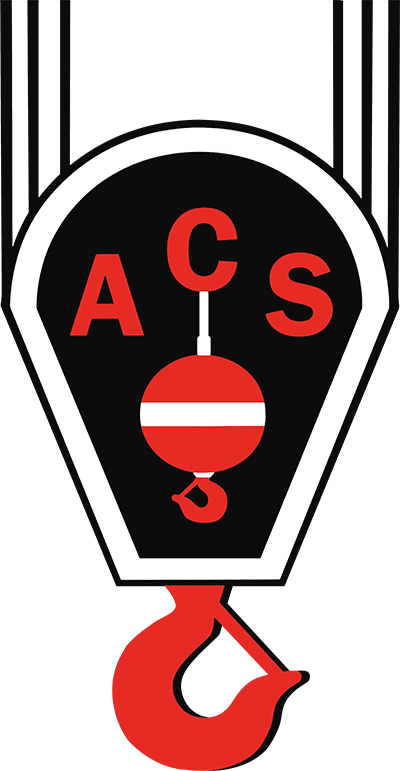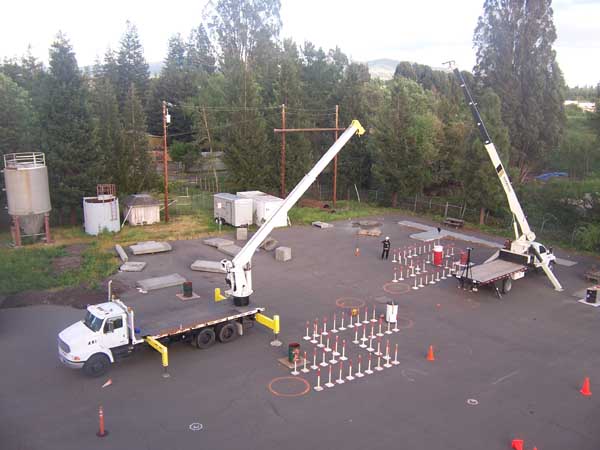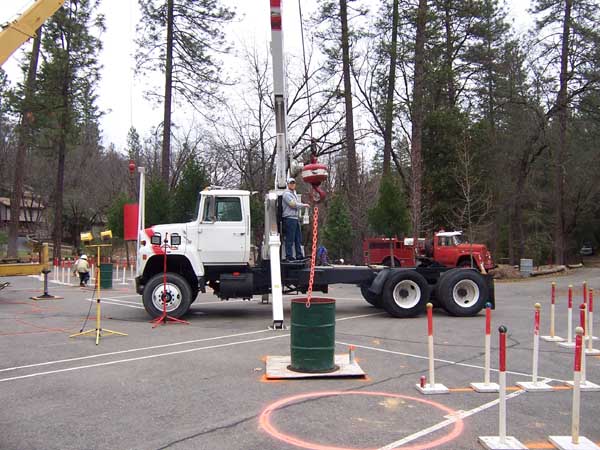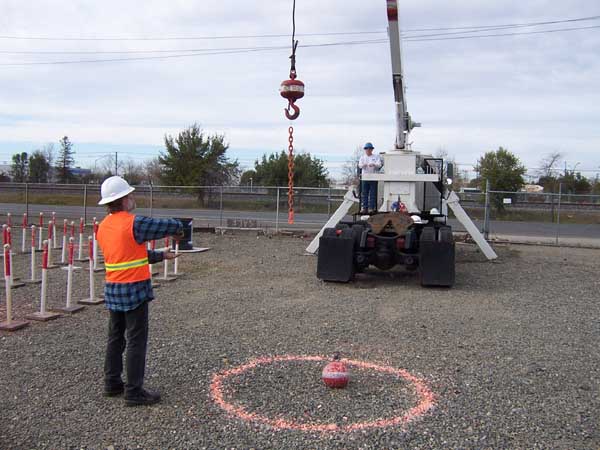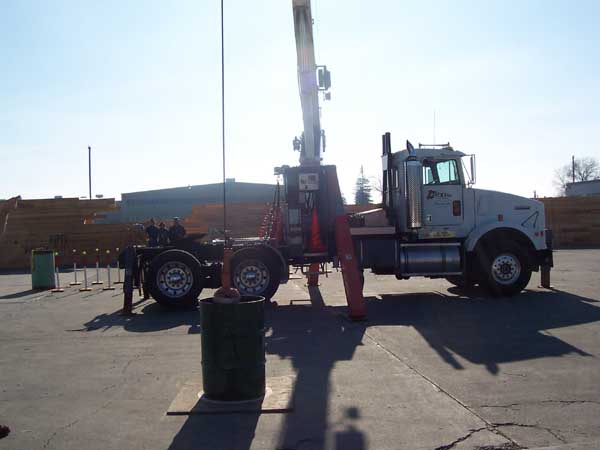Crane Selection
Before taking the exam it is important to select the right type of crane, for the category in which you choose to be certified on. The national crane operator certification test breaks these categories down into two categories:
1. Fixed cab (TSS) telescopic boom crane
2. Swing cab (TLL) telescopic boom crane (there is no longer a minimum or maximum tonnage regarding crane operator certification)
The way in which the crane is set up in reference to the test course can make a significant difference. There are many factors that are taken into consideration in the layout process by the testing company, but the most important one is the maximum boom length of the crane. Typically the layout of the course is based on 70%-75% of the boom length on the crane being used. And the course is laid out based on the boom angles of the crane, so the longer the maximum the boom length on the crane the more difficult the test will be. This is when one of the unique circumstances where “bigger or newer is not necessarily better.”
When selecting a crane that you wish to take your practical exam on it is assumed that you would like to keep as simple as possible. If that were the case an older crane with less capacity would most likely be the best bet. The older cranes might not run as smooth but generally they had shorter boom lengths than the newer ones which would mean the test course and the 55 gallon barrels would be much closer to you than on a newer crane of the same capacity. The older cranes also seemed to be built a lot stouter; this would mean that the booms would have a little less deflection in them (less shaky) than the newer cranes of similar capacity with longer booms.
Your last consideration would probably to select which type of crane to do your test on. California Crane School has conducted thousands of practical tests on many types of cranes and the best luck for the fixed cab telescopic boom crane has always been on the boom truck as opposed to a carrydeck (table crane). As far as the swing cab crane is concerned a truck crane or a rough terrain crane we have not found there to be a significant difference in testing results.
American Crane School uses many cranes in our training and testing process, which are all Cal OSHA, certified. These cranes are used exclusively for the training and testing for crane operator certification.
Test Weight Selection
When the cad drawings are designed for how a crane is to be set up in reference to the test course, another important factor is brought into consideration Is the diameter of the test weight. The test weight diameter can range anywhere from 2’-4’ diameter . In this case as well bigger is definitely not better. The course size is adjusted based on the diameter of the test weight, the course is designed to give you 2 feet on each side of the test weight between the poles to maneuver through the test course, However the size of the start and stop circle always remains the same 6’ diameter, which makes landing a 2’ diameter test weight into the circle much easier than landing a 4’ diameter test weight into that circle. The weight in the test weight ranges between 20%-30% of the single line pull of the crane but nothing can be done about this.
American Crane School only uses 2’ diameter test weights for crane operator certification training and testing.
Tennis Balls on Poles
Although not that important but slightly helpful is the option of the testing company allowing practical examiners to use a 12’ nylon string to attach the ball onto the pole so a lazy examiner or proctor does not have to fetch the tennis balls when they fall off of the cones. This practice makes it more convenient for the practical examiner or proctor, however this is not advantageous to the candidate that is being tested. When the cone is starting to lay over and the ball falls off the pole, that impact is sometimes enough to knock the pole completely over resulting in a much more significant point loss than just knocking down a tennis ball.
American Crane School does not use the services of lazy practical examiners and proctors we make them chase the tennis balls.
Before You Start Your Crane Practical Exam
Your practical exam begins the minute you sign your score sheet. You will be given a 15-minute familiarization period, where you are not allowed to shadow the zigzag corridor or barrels with the headache ball. This is just a time where you must stay in a designated area and familiarize yourself with the functions on the crane excluding telescoping.
You will also get another 5-minute familiarization period with the test weight in a designated area before you start task 4: Negotiate zigzag corridor with test weight. Keep in mind you can practice as much as you want with the crane, the test weight, and the test course before you sign your score sheet or before your test begins. This can also help you achieve positive results on your crane practical exam.
Most Common Excuses You Should Avoid Using
1. The crane is too shaky. That crane was standing perfectly still before you got on it.
2. We always use taglines at work, Why can’t we use taglines on the test weight during the test?
This test is not designed for tagline operator certification, but a crane operator certification.
3. We only use a crane from time to time, why do we have to go through all this crane operator certification?
Because Cal-OSHA says you do. 5006.1 (Cal-OSHA 5006.1 Questions & Answers) 5006.1 enforcement
4. Why is there a time limit on the crane test, at work we can go as slow as we want just as long as we operate the crane safely?
Sure we would all like to sit around and wait for the load to stop swinging every time you perform a function but you are not at work. You are performing a test that is designed to assess your abilities as a crane operator.
Understanding the nuances of crane operation is essential for success in the certification exam. Beyond just mastering the tasks, it’s crucial to familiarize yourself with the equipment and the environment. Each crane type presents unique challenges, and knowing how to navigate these can set you apart. Remember, practice is key. Utilize every moment before the exam to hone your skills and build confidence. The more comfortable you are with the crane’s controls and the layout of the test course, the better your performance will be. Additionally, consider the importance of mental preparation. Visualizing each task and anticipating potential obstacles can greatly enhance your focus and execution during the exam. Embrace the learning process and approach the certification with a positive mindset, knowing that each step brings you closer to becoming a certified crane operator.
The crane operator certification practical exam (hands on) consists of 4 tasks
1. Place overhead ball in stop circle (optimum time 1:30)
2. Follow hand signals (not timed)
3. Place overhead ball in two barrels (optimum time 3:30)
4-A. Negotiate zigzag corridor with test weight in forward fashion
4-B. Negotiate zigzag corridor with test weight in reverse fashion
(optimum time 3:00 each way swing cab telescopic boom crane)
(optimum time 4:00 each way fixed cab telescopic boom crane)
